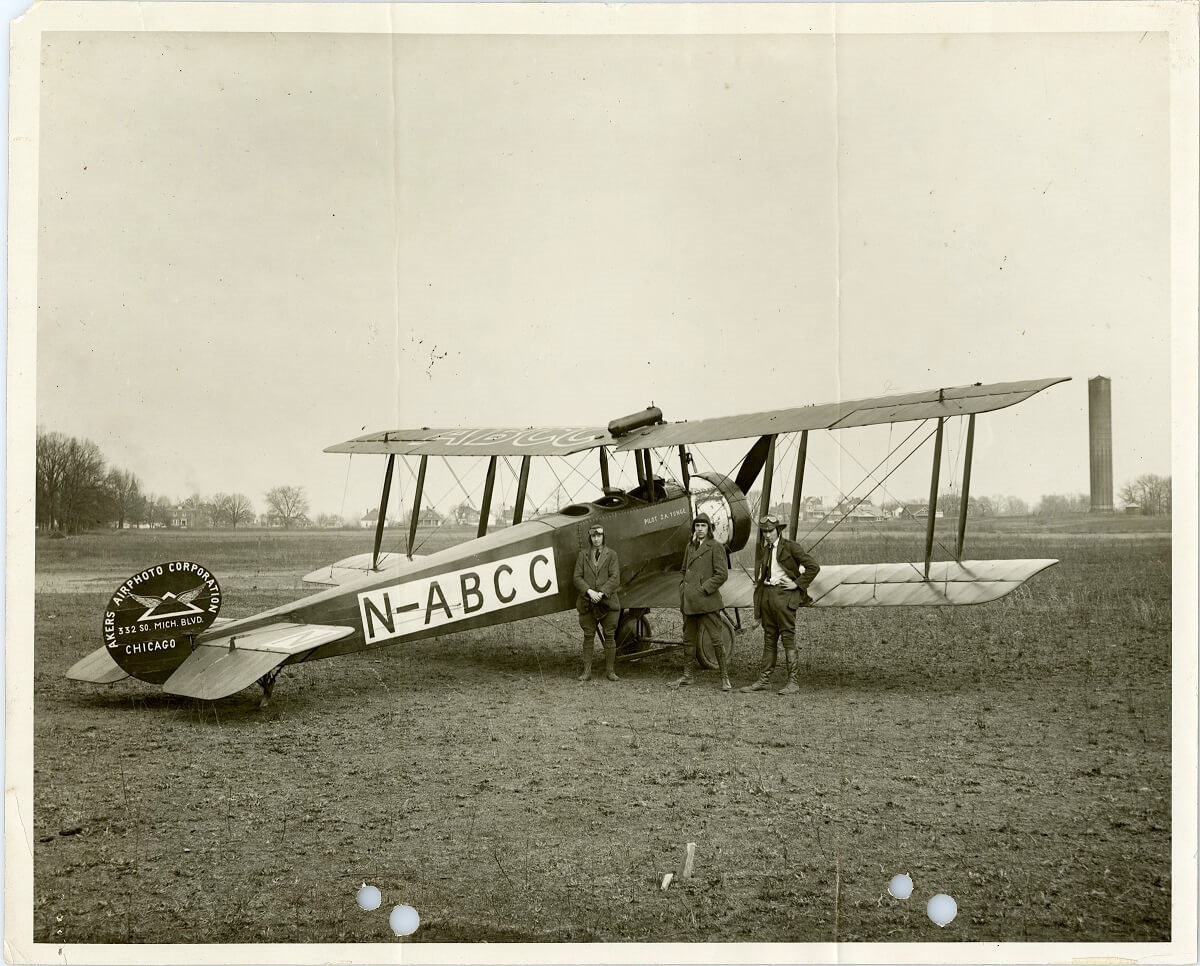 On August 19, 1939, President Franklin Roosevelt established the first National Aviation Day through a proclamation, declaring Orville Wright’s birthday as an annual celebration of all things aviation. Roosevelt’s hope in establishing this national day of recognition was to spur public interest in the rapidly expanding world of aviation and invite the public to consider their potential contributions to the future of flight.
On August 19, 1939, President Franklin Roosevelt established the first National Aviation Day through a proclamation, declaring Orville Wright’s birthday as an annual celebration of all things aviation. Roosevelt’s hope in establishing this national day of recognition was to spur public interest in the rapidly expanding world of aviation and invite the public to consider their potential contributions to the future of flight.
Building Public Trust in Aviation
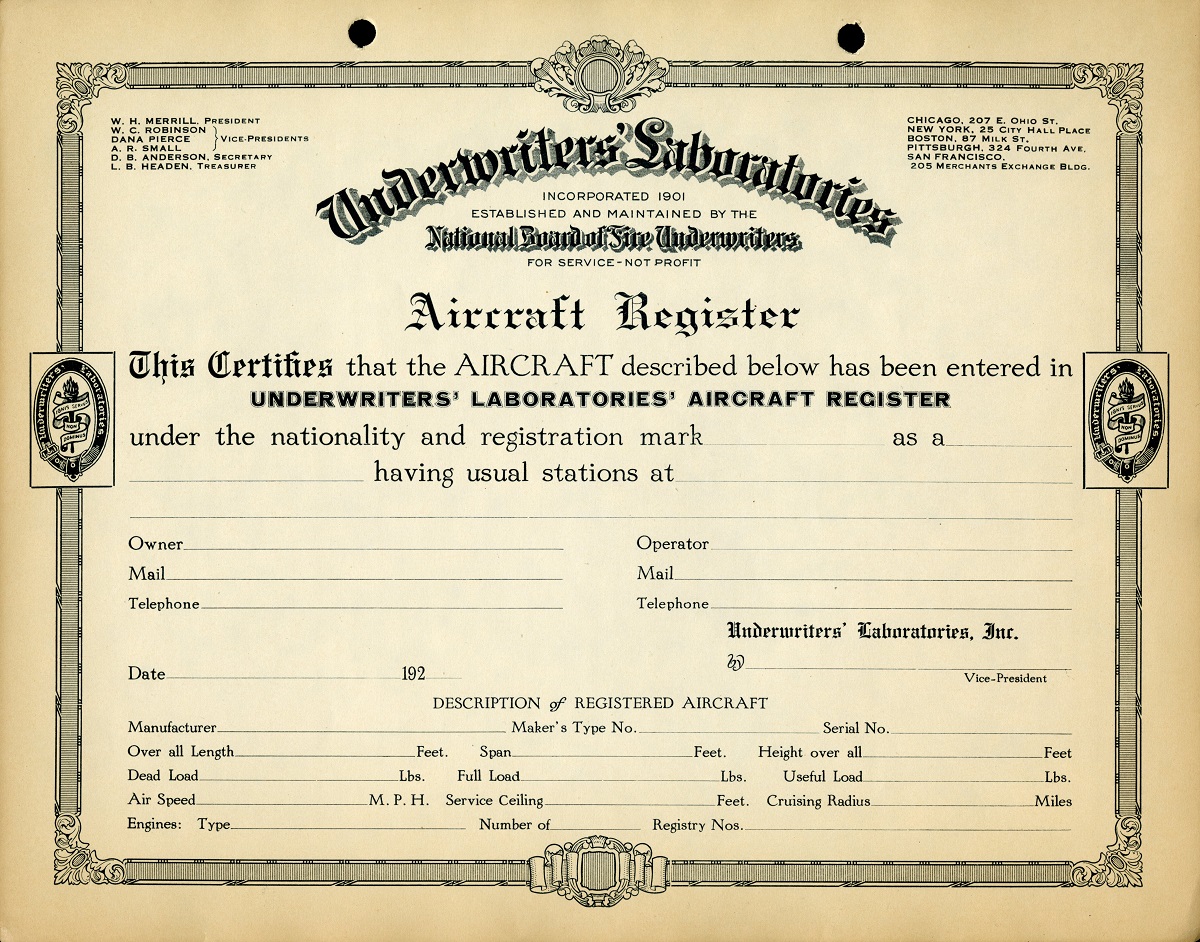
Although the first flight occurred in Kitty Hawk, North Carolina on December 17, 1903, it wasn’t until 1923 that the Civil Aeronautics Board was established. But fortunately for the aviation community, that didn’t mean that planes weren’t certified safe for flight before then.
In 1920, the National Aircraft Underwriters Association first commissioned Underwriters Laboratories to conduct the inspection of planes and establish adequate manufacturing standards.
By July 1, 1921, the NAUA decided unanimously to mandate that all aircraft insured against fire, theft, collision, and sinking had to first be registered with UL.
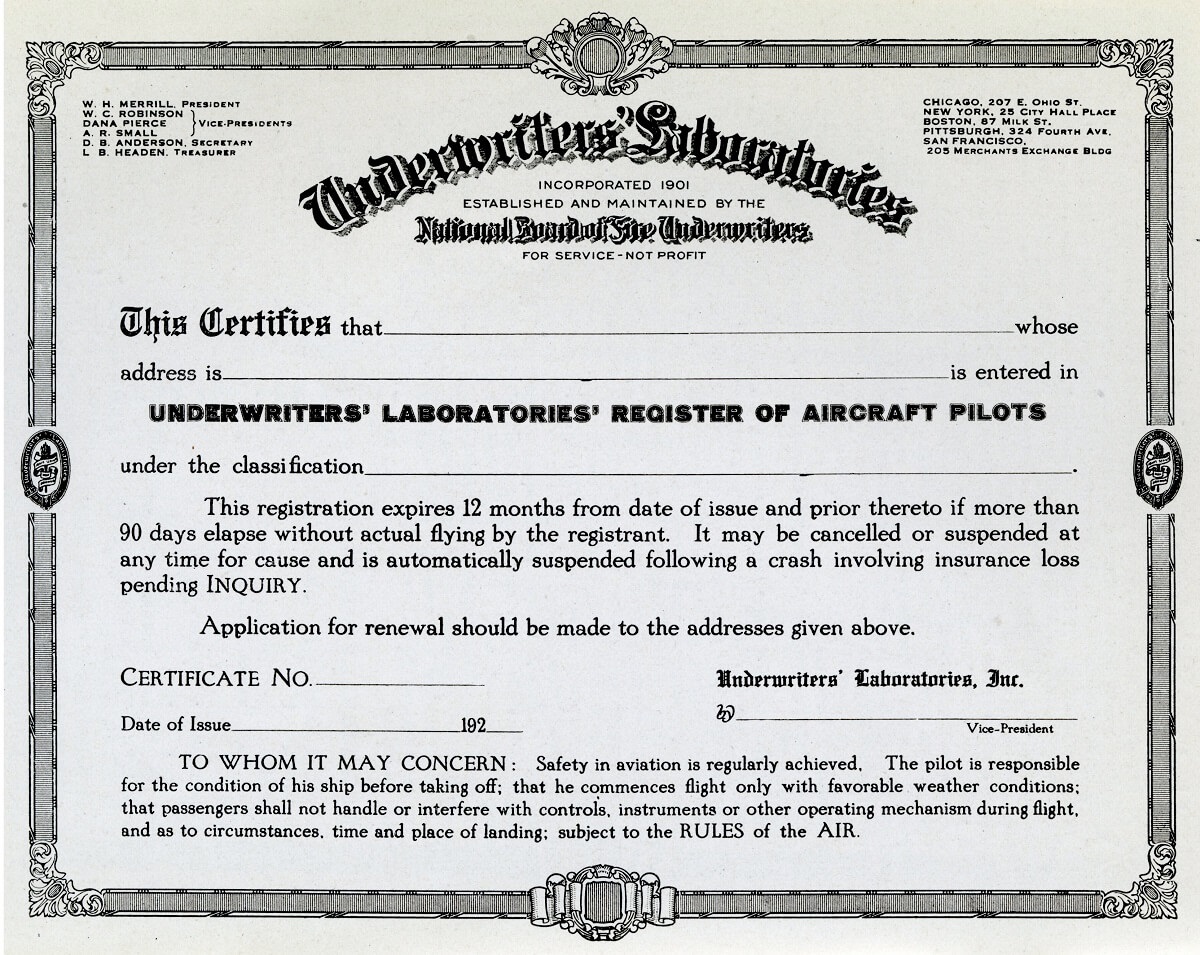
Just one month after the NAUA’s decision, it was determined that even the safest aircraft could not be flown by an
unqualified pilot, and UL was again approached to create a set of rules by which pilots could be certified. This led to the publication of the booklet “Rules of the air” in August 1921, which were the first set of rules for civilian aircraft in the United States. UL continued to certify pilots for 2 years until the Civil Aeronautics Board was formed.
ULSE and Aviation Today
Today, UL Standards & Engagement still carries on its 103-year tradition of keeping the aviation community safe through the development of safety standards. Though the FAA, established in 1958, is now the official certifying organization for both planes and pilots, ULSE still plays a significant role in aviation safety. Through our standards development process, we collaborate with stakeholders in all areas of aviation, from research and development, to supply chain and manufacturing, as well as flight personnel, technicians, and regulators, to develop standards that help to safely guide the evolving landscape of aviation technology. These are just a few examples of the efforts we’ve made to help keep the skies safe:
UL 5840, Battery Powered Ground Support Equipment
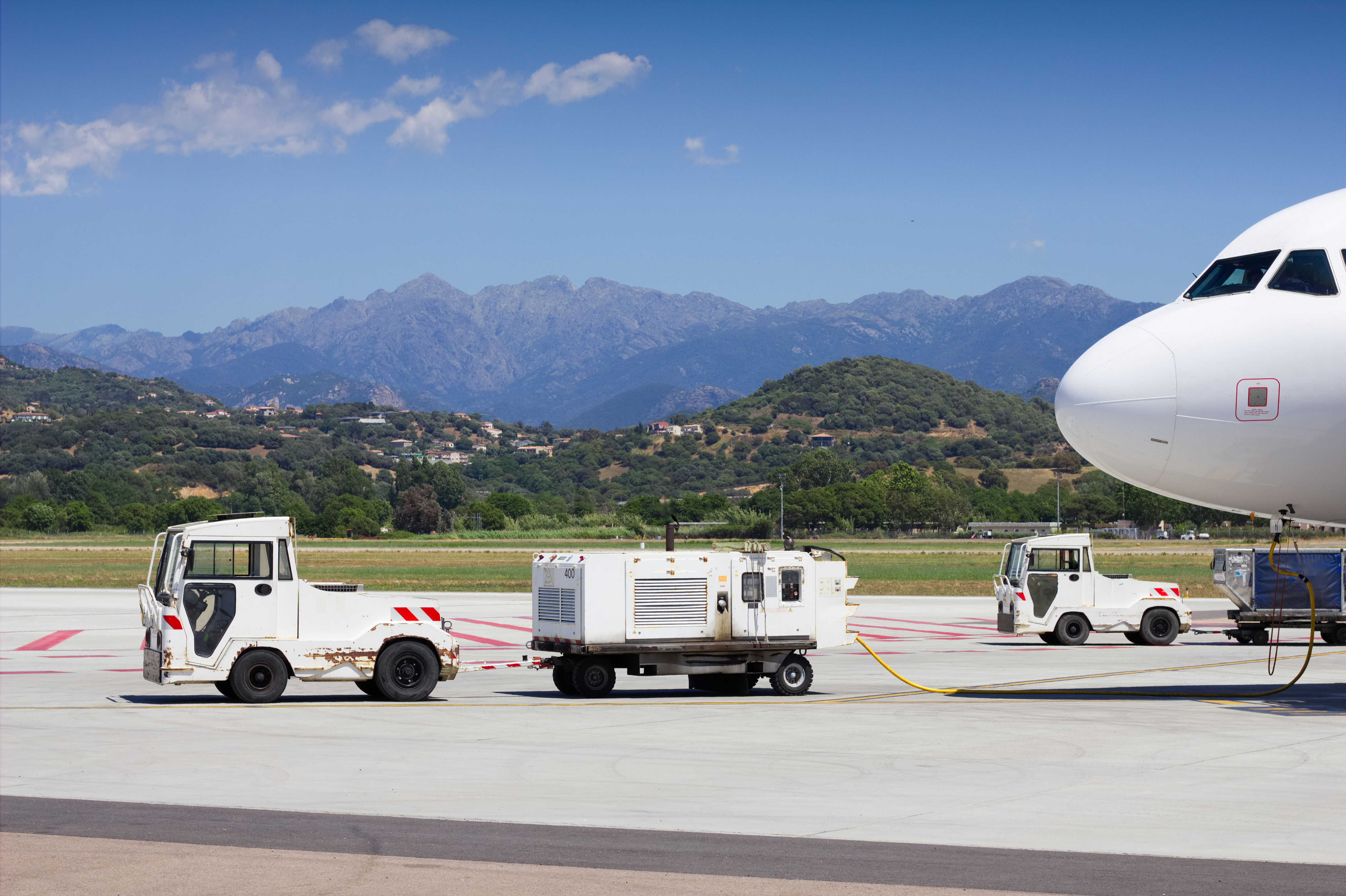
The binational requirements in UL 5840 cover the electrical systems of aviation ground support equipment powered by lithium-based batteries, mitigating fire, shock, and explosion risks related to normal operations, while also accounting for potential misuse. This set of requirements was developed as a result of conversations held at the Singapore Aviation Summit, hosted by our partner UL Research Institutes in November 2019.
UL 5800, Battery Fire Containment Products
Battery fires are an increasing problem in both the aviation and automotive industries, with many solutions being developed to help contain the fires caused by these batteries. Since lithium-ion batteries can generate their own oxygen supply, fire containment methods must rapidly develop alongside battery technology. UL 5800, also a binational Standard, specifically provides criteria for a subset of these lithium-ion powered devices known as portable electronic devices. PEDs are items such as laptops, tablets, and mobile phones, and UL 5800 covers fire suppression techniques requiring manual intervention beyond the standard aircraft fire suppression system. Both smoke release and touch temperature of fire containment products after mitigation were considered in the development of this Standard.
UL 3030, Standard for Unmanned Aircraft Systems
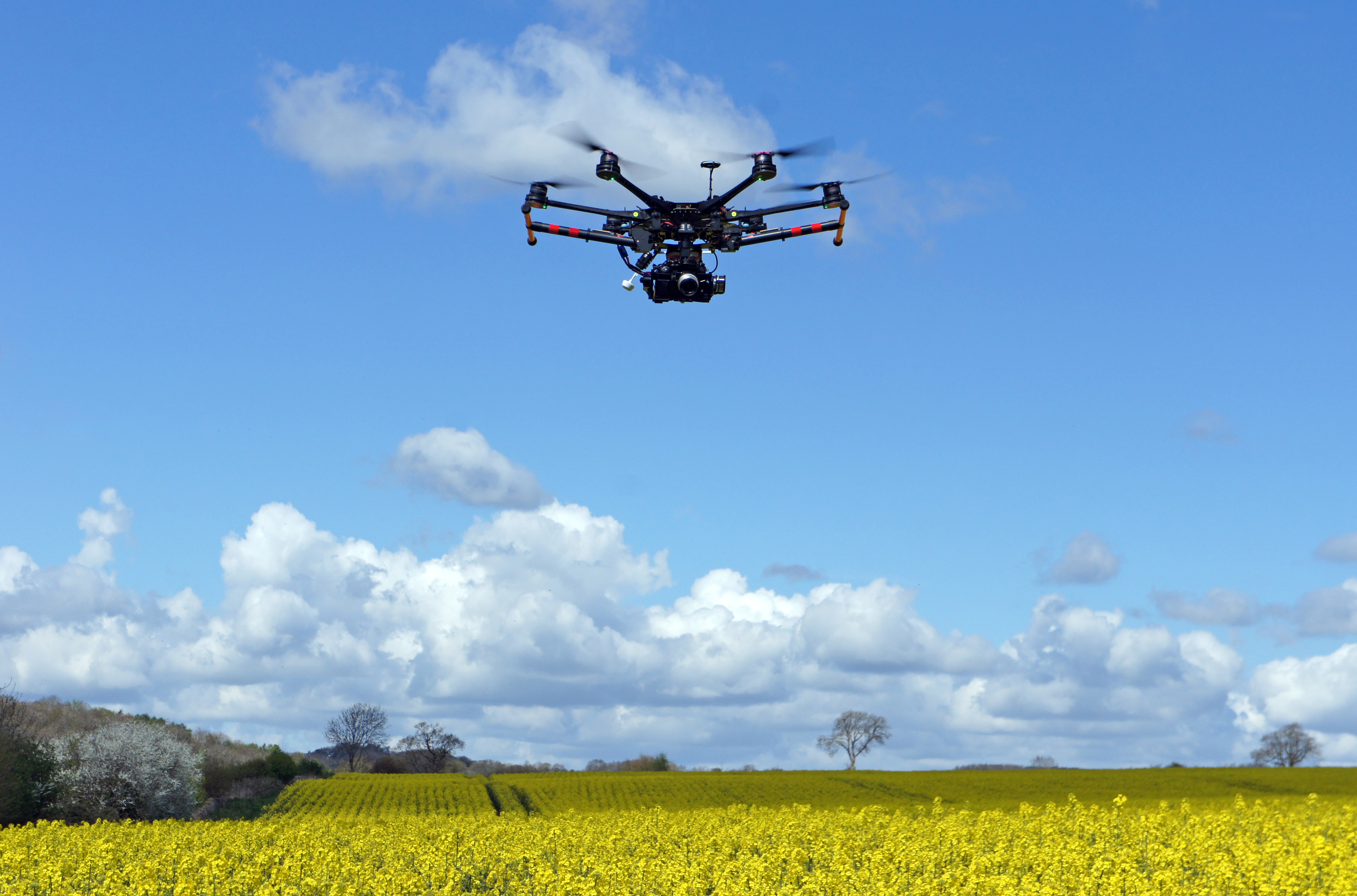
Unmanned Aerial Systems, more commonly known as drones, have become vital to various industries and are increasingly popular with hobbyists. Large parts of the drone industry are now regulated by the FAA, prompting increasing calls for safety standards regarding both the operation and manufacturing of drones. The binational Standard, UL 3030, covers UAS electrical systems used in commercial applications, establishing safe parameters for UAS batteries to help mitigate thermal runaway and fire scenarios.
Looking forward
ULSE shows no signs of slowing down when it comes to helping keep the skies safe through Standards development.
As we celebrate National Aviation Day, we also keep in mind the many moving parts of aviation safety and recognize our role in developing and maintaining the Standards that help make the skies much safer for all of us.